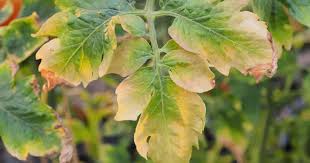How to kill Tomato fruit worms

Nothing is more frustrating than picking a tomato off the vine only to find that it is rotting from the inside out and has this pencil eraser size hole in it! The culprit that causes this kind of tomato fruit problem is the tomatNothing is more frustrating than picking a tomato off the vine only to find that it is rotting from the inside out and has this pencil eraser size hole in it! The culprit that causes this kind of tomato fruit problem is the tomato fruit worm.
Also known as the corn earworm or armyworm, it’s a caterpillar that eats on both the leaves and the tomato fruit. The holes can be shallow on the surface even deep into the center.
Not only does it leave a nasty holes in your tomato, it will immediately begin to rot from the inside out. Knowing the signs for them is part of the process of getting rid of them.
The young or small caterpillar has very distinct rows of dark bumps on its back and the older ones will have a dark gray or yellow to light brown stripes that run lengthwise on its whole body.
They can be even yellow, green and even reddish-brown in color and grow to about 1.5 – 2 inches long in size.
Many people refer to them as “black worms on tomatoes.”
Lifecycle Of Tomato Fruit worms
Adult
Tan – gray colored moth with a single black spot in the center of each wing. Some say this look like eyes on it’s wings. The wing span is around 1.5 inches total.
The adult moths lays it’s eggs on tomatoes as well as beans, peppers, squash, corn, lettuce, peas, potatoes as well as several other crops. They are not picky!
They are nocturnal meaning they lay their eggs right at dusk.
Eggs
The eggs of an adult moth are off white with a slightly flat-look, round shaped just about the size of pin head, so very tiny and hard to see.
They are easier to spot right before they hatch when they develop a reddish-brown stripe on them which makes them more noticeable.
Larva
The larva (worm) hatches into this tiny small light colored, with a brown or dark-colored head covered in hairs. The larva is what destroys your plants.
They feed off not only on the fruit, but also the stem as well as the leaves. It feeds on plants first and then moves to your tomatoes once they begin to ripen.
This is why many tomatoes that are not totally ripe, but pink in color are attacked. They prefer the fruit when it is going from green to barely ripe. Of course they do destroy green tomatoes too.
How To Kill Tomato Fruit worms Organically
Attract Natural Predators
Fortunately, tomato fruitworms do have natural predators. Attracting these to your garden can be a huge help in controlling these pesky things. These include;parasitic Trichogramma wasp, big-eyed bugs
minute pirate bugs, damsel bugs and lace wigs.
Prevent Tomato Fruit worms
Minimize their food source. Avoid planting near corn or cotton – the corn plant is there favorite. So keep tomatoes as far away as possible.
Watch for eggs on both sides of the leaves – begin by looking closest to the bloom. Pick off any leaves found with eggs and destroy them.
You can use cover cloths to keep adult moth from laying eggs on your plants
Getting Rid Of Tomato Fruit worms
– Watch for larva which looks like a tiny worm
– Apply Bt- Bacillus thuringiensis – liquid- this does break down in UV light – so you will need to apply it every few days at the first sign of eggs
– Use Neem Oil or Insecticidal soap (see recipe below) once a week and after each rain
– Apply Diatomacous Earth around the base of the stems to kill larva
– Hand-picking when you can find them.
To attract these natural predators to your garden plant – grow lots dill, parsley, asters, goldenrod, daisies, alfalfa and stinging nettles near the garden or very close to your tomatoes.
o fruit worm.
Also known as the corn earworm or armyworm, it’s a caterpillar that eats on both the leaves and the tomato fruit. The holes can be shallow on the surface even deep into the center.
Not only does it leave a nasty holes in your tomato, it will immediately begin to rot from the inside out. Knowing the signs for them is part of the process of getting rid of them.
The young or small caterpillar has very distinct rows of dark bumps on its back and the older ones will have a dark gray or yellow to light brown stripes that run lengthwise on its whole body.
They can be even yellow, green and even reddish-brown in color and grow to about 1.5 – 2 inches long in size.
Many people refer to them as “black worms on tomatoes.”
Lifecycle Of Tomato Fruit worms
Adult
Tan – gray colored moth with a single black spot in the center of each wing. Some say this look like eyes on it’s wings. The wing span is around 1.5 inches total.
The adult moths lays it’s eggs on tomatoes as well as beans, peppers, squash, corn, lettuce, peas, potatoes as well as several other crops. They are not picky!
They are nocturnal meaning they lay their eggs right at dusk.
Eggs
The eggs of an adult moth are off white with a slightly flat-look, round shaped just about the size of pin head, so very tiny and hard to see.
They are easier to spot right before they hatch when they develop a reddish-brown stripe on them which makes them more noticeable.
Larva
The larva (worm) hatches into this tiny small light colored, with a brown or dark-colored head covered in hairs. The larva is what destroys your plants.
They feed off not only on the fruit, but also the stem as well as the leaves. It feeds on plants first and then moves to your tomatoes once they begin to ripen.
This is why many tomatoes that are not totally ripe, but pink in color are attacked. They prefer the fruit when it is going from green to barely ripe. Of course they do destroy green tomatoes too.
How To Kill Tomato Fruit worms Organically
Attract Natural Predators
Fortunately, tomato fruit worms do have natural predators. Attracting these to your garden can be a huge help in controlling these pesky things. These include; parasitic Trichogramma wasp, big-eyed bugs
minute pirate bugs, damsel bugs and lace wigs.
Prevent Tomato Fruit worms
Minimize their food source. Avoid planting near corn or cotton – the corn plant is there favorite. So keep tomatoes as far away as possible.
Watch for eggs on both sides of the leaves – begin by looking closest to the bloom. Pick off any leaves found with eggs and destroy them.
You can use cover cloths to keep adult moth from laying eggs on your plants
Getting Rid Of Tomato Fruit worms
– Watch for larva which looks like a tiny worm
– Apply Bt- Bacillus thuringiensis – liquid- this does break down in UV light – so you will need to apply it every few days at the first sign of eggs
– Use Neem Oil or Insecticidal soap (see recipe below) once a week and after each rain
– Apply Diatomacous Earth around the base of the stems to kill larva
– Hand-picking when you can find them.
To attract these natural predators to your garden plant – grow lots dill, parsley, asters, goldenrod, daisies, alfalfa and stinging nettles near the garden or very close to your tomatoes.


